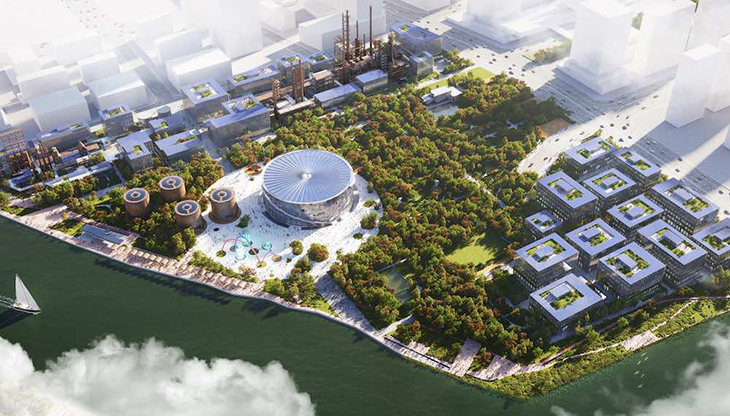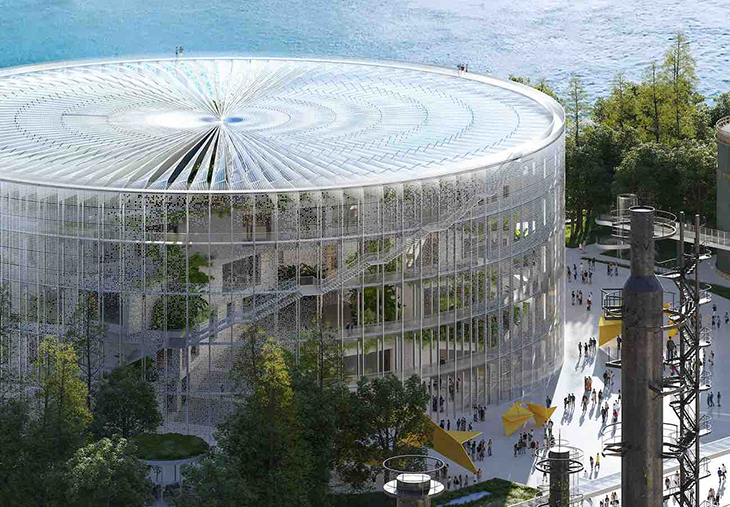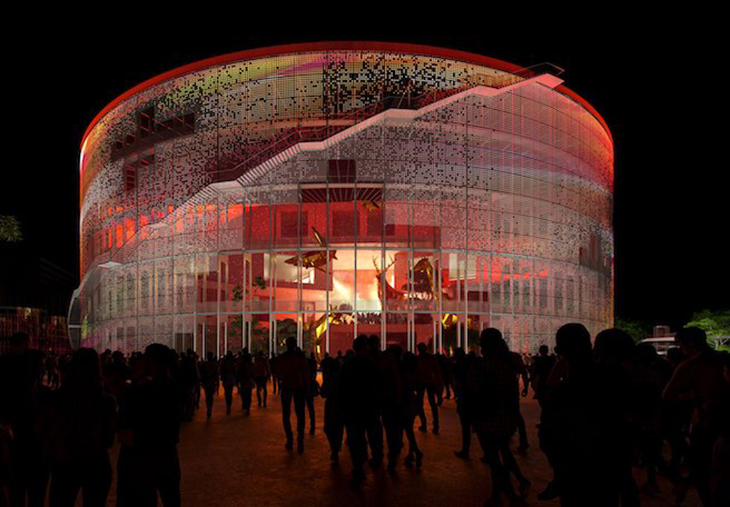
MVRDV, a renowned Dutch architecture firm, recently emerged as the winner of a prestigious competition after conceptualising the new Hangzhou Oil Refinery Factory Park. Sitting adjacent to the southern portion of China’s Grand Canal, this former industrial area is about to get an incredible makeover.
At the very heart of the project stands a captivating art and science museum, which will be surrounded by a vibrant tapestry of offices, retail spaces, and a diverse range of cultural offerings. Enveloped in a lush green environment, this groundbreaking endeavor strives to seamlessly weave together remnants of the new and old using modern elements but keeping portions of the past still intact.
The Grand Canal, revered as the world’s longest and one of its most ancient man-made waterways, is now undergoing a momentous transformation. China has taken decisive action to convert this industrial infrastructure into a valuable social asset, allowing it to provide access to the water nearby, as well as foster enjoyment for millions of people that live along its sprawling 1,700-kilometer – approximately 1056-mile – stretch.
Spanning over 45 acres, around 18 hectares, of land in Hangzhou, the site formerly housed an oil refinery. The new design, however, incorporates renewable energy sources which effectively showcase the nation’s commitment to transitioning from fossil fuels to sustainable alternatives. This also happens to be a movement that has gained significant momentum in more recent years.
With a forward-thinking approach, MVRDV capitalizes on the immense potential of converting industrial spaces into cultural havens. The iconic towers of the refinery buildings are carefully preserved and seamlessly integrated into the park’s landscape. Stairs and platforms thoughtfully dot the surroundings, offering panoramic vistas of the park and its environs.
Through their visionary design, MVRDV not only reimagines the Hangzhou Oil Refinery Factory Park but also symbolizes the harmonious coexistence of industrial heritage and the pursuit of cultural enrichment.

At the heart of the park lies the remarkable Art and Sci-tech Centre, designed to resemble an enlarged version of the silos that were once on the site. Its cylindrical exterior serves as a captivating architectural feature. A series of terraces interconnected by stairs and bridges within the museum create a dynamic public space. This versatile area can host performances, large-scale installations, and various events, breathing life into the museum’s vibrant atmosphere.
The outer façade of the museum has been ingeniously designed to allow the gentle breeze to permeate the structure. As a result, the interior space benefits from passive heating and cooling, with slight temperature fluctuations based on weather conditions. This innovative design feature acts as a thermal buffer, significantly reducing the energy required to maintain ideal temperatures within the museum’s programmed spaces.
Not only does the façade contribute to the museum’s functionality, but it also establishes the building as the focal point of the park. Adorned with an array of LEDs, the museum illuminates the night sky, creating a captivating media façade. This dynamic display can be utilized to entertain visitors and promote events happening within the museum.
According to MVRDV founding partner, Winy Maas, “As a planet, we know we need to move on from oil on a massive scale. But that raises the question, what should we do with all this infrastructure that was created? It is somehow, at the same time, tempting to make a clean break with history, and romantic to imagine a future where we build upon the ruins of the past.”
“With this project we do both: we incorporate the old industrial structures, while newly built elements – which are clearly distinguishable from the old – show us a better, more sustainable future. The old ‘fossils’ turn into energetic drums,” she added.

In addition, the façade also incorporates a number of small photovoltaic spots. This helps harness solar energy to generate renewable energy and power. These spots are arranged in a specifically designed “solar painting” that follows a parametric approach. Factors like solar exposure, prominent views, and prevailing winds were taken into account to figure out the optimal placements of the photovoltaics in order to ensure maximum efficiency.
Throughout the rest of the park, existing structures undergo transformation into contemporary offices and retail spaces. Where structures have been demolished, new constructions with modern design principles are erected. These new buildings maintain the dimensions of their predecessors but are constructed with glass and adorned with the same photovoltaic spots found on the museum’s façade, ensuring an integrated and cohesive look all throughout the park.
What are your thoughts? Please comment below and share this news!
True Activist / Report a typo


